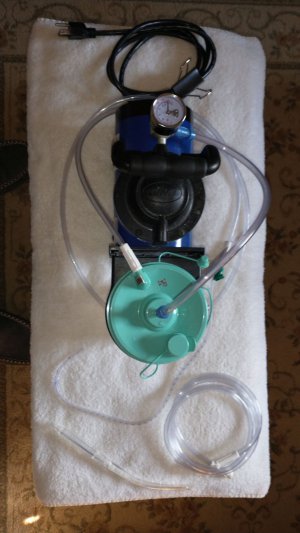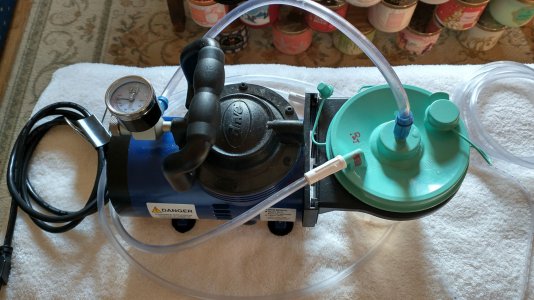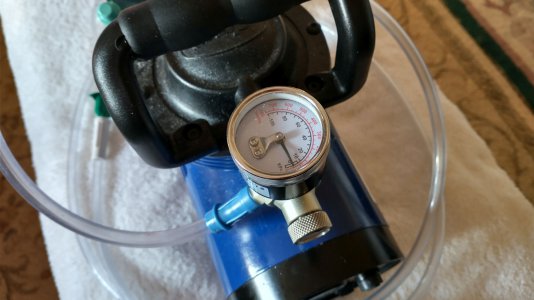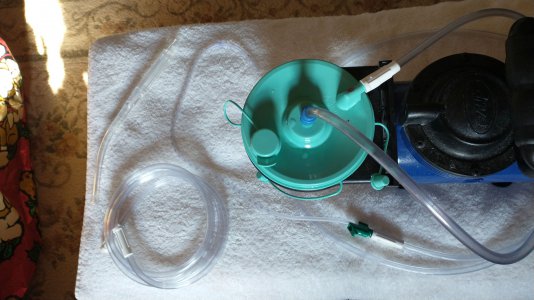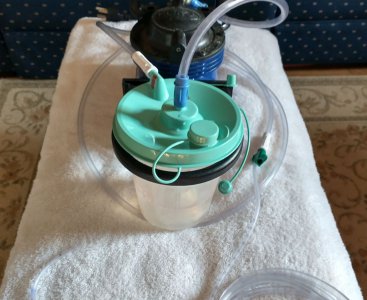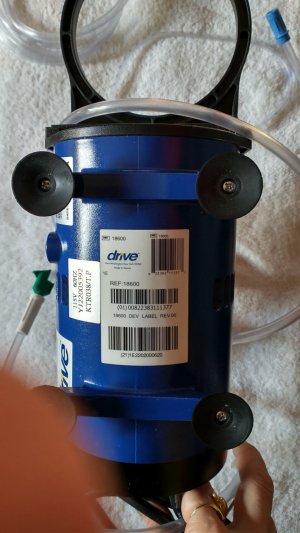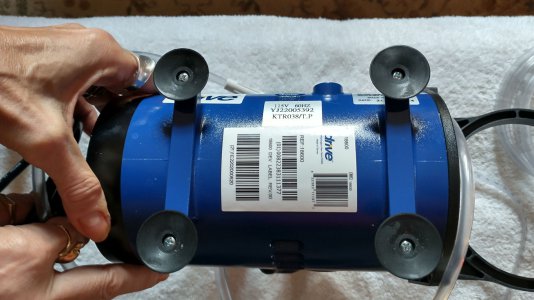- Joined
- Apr 28, 2014
- Messages
- 3,590
Let me start the new year off with possibly a very stupid question.
If possible I'm attempting to make up a siphon pump to use in a medical application for use at home.
Trying to curb medical costs here wherever I can.
Can I take a 2.5 or 3.5CFM vacuum pump from HF or Amazon and make up a medical use siphon pump?
I have (3) sets of hoses and collection canisters to put to use.
Insurance out-of-pocket resets Sunday and the charges for this pump are rather outrageous.
I tried talking to the medical supply company Thursday to get a fix on costs but all I was able to
get out of them is that after a year I'll own it. Which appears to be ~$86.00 per month x 12 = $1032 for a device that retails for $250.00
No Straight answer.
I am currently using one mfg'd by 'Drive Medical' Model 18600 it looks pretty much like the ones at HF and Amazon except it's oilless.
Maximum Vacuum 560 +/- 3% mmHg (56 cmHg +/- 3%)
Flow Range > 40 LPM
I have no idea what mmHg or cmHg is, and my cognitive skills are not doing too well these days.
I'm not doing well and am having a hard time trying to match up the spec numbers.
I was thinking of maybe this one from Amazon : -=- LINK -=-
Or this one from Harbor Freight : -=- LINK -=-
Only other item I believe I would need to get is a quality vacuum regulator. The one on the 'Drive' unit is not very good.
_Dan
If possible I'm attempting to make up a siphon pump to use in a medical application for use at home.
Trying to curb medical costs here wherever I can.
Can I take a 2.5 or 3.5CFM vacuum pump from HF or Amazon and make up a medical use siphon pump?
I have (3) sets of hoses and collection canisters to put to use.
Insurance out-of-pocket resets Sunday and the charges for this pump are rather outrageous.
I tried talking to the medical supply company Thursday to get a fix on costs but all I was able to
get out of them is that after a year I'll own it. Which appears to be ~$86.00 per month x 12 = $1032 for a device that retails for $250.00
No Straight answer.
I am currently using one mfg'd by 'Drive Medical' Model 18600 it looks pretty much like the ones at HF and Amazon except it's oilless.
Maximum Vacuum 560 +/- 3% mmHg (56 cmHg +/- 3%)
Flow Range > 40 LPM
I have no idea what mmHg or cmHg is, and my cognitive skills are not doing too well these days.
I'm not doing well and am having a hard time trying to match up the spec numbers.
I was thinking of maybe this one from Amazon : -=- LINK -=-
Or this one from Harbor Freight : -=- LINK -=-
Only other item I believe I would need to get is a quality vacuum regulator. The one on the 'Drive' unit is not very good.
_Dan


